Dwarf mongooses are the smallest African predators. They have a long tail, a huge pointed head, tiny ears, short limbs, and long claws. Their velvety fur can range in hue from golden red to very dark brown.
The common dwarf mongoose (Helogale parvula) is a mongoose species found in Angola, northern Namibia, South Africa’s KwaZulu-Natal province, Zambia, and East Africa. It belongs to the genus Helogale and is hence linked to H. hirtula.
These animals are often found in dry grassland, open forests, forested savannas, and bushland. They are most frequent in places with many termite mounds and avoid deep woods and deserts.
The common dwarf mongoose is a diurnal mammal. They are extremely gregarious and live in big family groups of 2 to 30 animals. Within a group of same-sexed animals, there is a tight hierarchy led by the dominant couple (often the oldest group members).
Common Dwarf Mongoose: Species Profile
COMMON NAME: Common Dwarf Mongoose
SWAHILI NAME: Nguchiro Mdogo wa Kawaida or Kitafe wa kawaida
SCIENTIFIC NAME: Helogale parvula
TYPE: Mammal
FOOD: Common dwarf mongooses are primarily insectivorous, feeding on a variety of insects such as beetles, termites, ants, and spiders. They may also consume small vertebrates, eggs, fruits, and seeds.
HABITAT: Common dwarf mongooses are found in various habitats including grasslands, woodlands, scrublands, and savannas. They are native to sub-Saharan Africa.
SIZE: Common dwarf mongooses have a body length of approximately 20 to 28 centimeters (8 to 11 inches), with a tail length of about 15 to 20 centimeters (6 to 8 inches). They weigh between 200 to 350 grams (7 to 12 ounces).
AVERAGE LIFE SPAN IN THE NATURAL HABITAT: In the wild, common dwarf mongooses have an average lifespan of around 5 to 8 years. However, some individuals may live longer under favorable conditions.
ACTIVE: Common dwarf mongooses are diurnal creatures, meaning they are primarily active during the day. They live in social groups called “troops” and exhibit cooperative behaviors in various activities, including foraging, grooming, and defending their territory.
GESTATION PERIOD: The gestation period for common dwarf mongooses is approximately 60 to 70 days. Females give birth to litters of 2 to 5 pups, which are born in underground burrows or other concealed locations.
WEIGHT: Common dwarf mongooses typically weigh between 200 to 350 grams (7 to 12 ounces), making them relatively small and lightweight mammals. They have a slender body, short legs, and a pointed snout.
SIZE COMPARISON TO A 6-FT MAN: Common dwarf mongooses are significantly smaller than a 6-ft man, with a body length of approximately 20 to 28 centimeters (8 to 11 inches). They are agile and adapted to their natural habitats, enabling them to move swiftly and navigate through dense vegetation.
Physical Features:
The Common Dwarf Mongoose (Helogale parvula) is a small carnivorous mammal native to Africa. Here are some key features of its appearance:
1. Size and Weight: Common Dwarf Mongooses are among the smallest mongoose species, measuring around 20-28 centimeters (8-11 inches) in length, with a tail length of approximately 15-20 centimeters (6-8 inches). They weigh between 210 and 350 grams (7.4 to 12.3 ounces).
2. Body Structure: These mongooses have slender bodies with short legs. They have a long, tapering tail that aids in balance and agility. Their fur is short and dense, typically varying in color from grayish-brown to reddish-brown, with lighter underparts.
3. Facial Features: Common Dwarf Mongooses have pointed snouts and small, rounded ears. Their eyes are relatively large and are positioned on the sides of their heads, providing a wide field of view.
4. Claws and Paws: They have sharp, non-retractable claws that help them dig burrows and climb trees. Their paws are well adapted for efficient movement on both the ground and trees.
5. Scent Glands: Like other mongoose species, Common Dwarf Mongooses possess anal scent glands that they use for marking territories and communicating with other members of their group.
6. Sexual Dimorphism: There is minimal sexual dimorphism in Common Dwarf Mongooses, with males and females appearing quite similar in size and appearance.
Overall, the Common Dwarf Mongoose has a small and agile body with distinct coloration that enables it to navigate its habitat effectively. Its appearance is well-suited for the species’ adaptive behaviors and survival strategies in the African ecosystems it inhabits.
A. Small Stature:
The Common Dwarf Mongoose is aptly named for its small size, typically measuring around 25 centimeters in length and weighing approximately 200 grams. Its diminutive stature allows for quick and agile movements, enabling it to navigate through the intricate habitats it calls home.
B. Sleek Fur and Coloration:
This mongoose species boasts a sleek coat of fur, which ranges in color from grayish-brown to reddish-brown. Its fur provides camouflage amidst the varied landscapes it inhabits, including grasslands, savannas, and woodland areas.
Behavior and Social Structure:
The Common Dwarf Mongoose (Helogale parvula) is a highly social and active mongoose species known for its fascinating behaviors. Here are some key aspects of their behavior:
1. Social Structure: Common Dwarf Mongooses live in groups called “troops” or “bands” that typically consist of 10 to 30 individuals. These troops are hierarchical, with a dominant breeding pair leading the group.
2. Cooperative Living: Cooperation is a crucial aspect of their behavior. Members of the troop work together to defend territories, locate food, and raise young. They engage in cooperative hunting, where individuals take turns to flush out prey and share the captured food.
3. Vocalizations: Common Dwarf Mongooses communicate using a range of vocalizations, including chirps, chatters, and alarm calls. These calls serve to warn the group of potential threats, coordinate activities, and maintain social cohesion.
4. Foraging Strategies: They are primarily diurnal and feed on a variety of small animals, including insects, spiders, reptiles, birds, and rodents. Common Dwarf Mongooses employ different foraging strategies, including digging for prey in the ground and searching for food in trees and bushes.
5. Reproduction: Breeding in Common Dwarf Mongooses is restricted to the dominant breeding pair within the troop. The female gives birth to a litter of 2 to 4 pups, which are cared for by other members of the group. This cooperative care allows the breeding female to participate in other activities, such as foraging and territory defense.
6. Territorial Behavior: Common Dwarf Mongooses defend territories against neighboring troops. They mark their territories using scent glands and engage in confrontations with intruding individuals or groups.
7. Sunbathing: An interesting behavior observed in Common Dwarf Mongooses is sunbathing. They expose their bellies to the sun, which may help regulate their body temperature and reduce parasite infestations.
These behavioral traits contribute to the success and survival of Common Dwarf Mongooses in their natural habitats. Their social structure, cooperation, and adaptable foraging strategies enhance their ability to thrive in the African ecosystems they inhabit.
A. Highly Social:
One of the remarkable aspects of the Common Dwarf Mongoose is its social nature. These mongooses live in close-knit groups known as troops, comprising anywhere from 6 to 30 individuals. Within these troops, cooperation and communication are key, allowing for effective foraging, predator detection, and defense of their territories.
B. Cooperative Foraging:
The Common Dwarf Mongoose employs a cooperative foraging strategy, where group members work together to search for food. They have a diverse diet, feeding on insects, small vertebrates, eggs, and fruits. This cooperative behavior increases their foraging efficiency and enhances their chances of survival.
C. Intricate Communication:
Communication within the troop is vital for maintaining social cohesion. Common Dwarf Mongooses use a variety of vocalizations, such as chirps, trills, and growls, to convey messages and coordinate group activities. Scent marking and grooming also play essential roles in establishing social bonds and signaling territory ownership.
Ecological Significance:
A. Pest Control:
The Common Dwarf Mongoose provides valuable pest control services within its ecosystem. Its diet includes insects and small vertebrates, helping to regulate populations of pests that could otherwise pose a threat to agricultural areas and human settlements.
B. Seed Dispersal:
As the Common Dwarf Mongoose moves through its habitat, it unintentionally aids in seed dispersal. Seeds from consumed fruits are excreted in different locations, contributing to the dispersal and germination of plant species, thereby promoting biodiversity.
Conservation Status and Threats:
A. Habitat Loss:
The primary threat to the Common Dwarf Mongoose is habitat loss due to human activities such as agriculture, urbanization, and deforestation. The conversion of natural habitats into agricultural fields or settlements fragments their territories, limiting their access to resources and reducing their overall population.
B. Human-Wildlife Conflict:
In some instances, conflicts arise when Common Dwarf Mongooses come into contact with human settlements. They may be perceived as a threat to poultry or agricultural produce, leading to conflicts that could result in the persecution or elimination of these valuable mongoose populations.
Conservation Efforts:
A. Protected Areas:
Establishing and effectively managing protected areas is crucial for the conservation of the Common Dwarf Mongoose. These areas provide safe havens where mongooses can thrive and fulfill their ecological roles.
B. Public Education and Awareness:
Raising public awareness about the ecological significance of the Common Dwarf Mongoose and promoting its conservation is vital. Educational programs, community engagement, and ecotourism initiatives can help foster appreciation for these remarkable creatures and encourage sustainable practices.
Helogale parvula
The Common Dwarf Mongoose (Helogale parvula) captivates us with its social dynamics, cooperative behavior, and valuable ecological contributions. By prioritizing habitat conservation, mitigating human-wildlife conflicts, and raising awareness about their significance, we can ensure the long-term survival of the Common Dwarf Mongoose and preserve the delicate balance of African ecosystems for generations to come.
Common Dwarf Mongoose Adaptations
The Common Dwarf Mongoose (Helogale parvula) has developed several adaptations that contribute to its survival and success in its natural habitat. Here are some notable adaptations of this mongoose species:
1. Size and Agility: Common Dwarf Mongooses are small in size, measuring around 25-30 centimeters in length, excluding the tail. Their compact body shape and agile movements allow them to navigate through complex vegetation and narrow crevices, aiding in hunting and escaping predators.
2. Group Living: The social structure of Common Dwarf Mongooses is an important adaptation. Living in cooperative groups provides them with increased protection against predators, efficient foraging, and enhanced care for offspring. Group members work together to defend territories and share responsibilities, increasing their chances of survival.
3. Cooperative Hunting: Common Dwarf Mongooses exhibit cooperative hunting behaviors, where group members collaborate to capture prey. They employ strategies like flushing out prey from hiding places or cooperatively chasing down larger prey, maximizing their hunting success.
4. Scent Marking and Communication: Scent marking is a significant adaptation for Common Dwarf Mongooses. They have scent glands near their anal region, which they use to mark territories and communicate with other members of their troop. Scent marking helps establish group boundaries and maintain social cohesion within the troop.
5. Resilience to Venomous Bites: The Common Dwarf Mongoose has developed some resistance to venomous snake bites. While they may fall victim to snake bites, their fast metabolism and efficient circulation system help them tolerate and recover from such incidents better than other mammals.
6. Diurnal Lifestyle: Being diurnal, Common Dwarf Mongooses are active during the day, which allows them to take advantage of available food resources and increases their visibility to potential mates. Their diurnal lifestyle also aligns with their prey’s activity patterns, enhancing their hunting success.
7. Adaptability to Varied Habitats: Common Dwarf Mongooses can adapt to a range of habitats, including savannahs, grasslands, shrublands, and woodlands. This adaptability allows them to occupy diverse ecological niches across their distribution range.
These adaptations have allowed the Common Dwarf Mongoose to thrive in its natural environment. Their cooperative behaviors, agility, and ability to adapt to different habitats contribute to their survival and make them a fascinating species to observe in the African wilderness.
Where to See Dwarf Mongooses in Tanzania
The Common Dwarf Mongoose (Helogale parvula) can be found in various locations across Tanzania. Here are some areas where you have a chance to spot this mongoose species:
- Serengeti National Park: The Serengeti is known for its diverse wildlife, and the Common Dwarf Mongoose is one of the many species that inhabit the park. Keep an eye out for these small mongooses as you explore the savannahs and woodlands of the Serengeti.
- Ngorongoro Conservation Area: With its varied habitats, including grasslands and forests, the Ngorongoro Conservation Area offers suitable environments for the Common Dwarf Mongoose. Look for them while exploring the crater floor or hiking along the trails in the area.
- Tarangire National Park: Tarangire is home to a wide array of wildlife, including the Common Dwarf Mongoose. As you go on game drives or nature walks in the park, watch for these small mongooses as they forage for food or interact with their troop.
- Lake Manyara National Park: This park is known for its lush greenery and diverse wildlife. The Common Dwarf Mongoose can be found here, especially in the forested areas near the lake. Keep your eyes peeled while exploring the park’s trails and observing the animal life.
- Ruaha National Park: Located in southern Tanzania, Ruaha National Park is a haven for wildlife, including the Common Dwarf Mongoose. The park’s mix of grasslands and woodlands provides suitable habitats for these mongooses to thrive.
Remember, the sightings of wild animals can never be guaranteed, as they roam freely in their natural habitats. However, visiting these national parks and conservancies in Tanzania increases your chances of encountering the Common Dwarf Mongoose and enjoying the rich biodiversity of the region.
Common Dwarf Mongoose Safari Tips
- Be patient and observant: Common Dwarf Mongooses are small and can be elusive. Take your time to scan the surroundings and look for any movement or signs of mongoose activity. Their agile nature and quick movements may require some patience to spot them.
- Choose the right time of day: Common Dwarf Mongooses are diurnal, which means they are most active during the day. Plan your safari activities accordingly, focusing on morning and late afternoon when they are more likely to be active.
- Join guided game drives or walking safaris: Local guides and rangers have extensive knowledge about the wildlife in the area, including the habitats and behaviors of the Common Dwarf Mongoose. Opting for guided tours or safaris increases your chances of encountering these mongooses and learning more about their behavior.
- Keep a safe distance: While observing the Common Dwarf Mongoose, it’s important to maintain a respectful distance and not disturb their natural behavior. Use binoculars or a telephoto lens to get a closer look without intruding on their space.
- Stay quiet and minimize sudden movements: Loud noises and sudden movements can startle wildlife, causing them to retreat or hide. Stay calm, speak softly, and move slowly to avoid scaring away the Common Dwarf Mongooses. This will allow you to observe their natural behaviors without causing any disruption.
- Use camouflage and earth tones: To blend in with the surroundings and minimize your visibility, consider wearing clothing in earth tones such as khaki, brown, or green. Avoid bright colors that may attract unnecessary attention and potentially scare away the mongooses.
- Be respectful of the environment: During your safari, it’s essential to respect the natural habitat of the Common Dwarf Mongooses and other wildlife. Do not litter, maintain a safe distance from other animals, and follow any regulations or guidelines set by the national parks or conservancies you are visiting.
Remember, wildlife sightings are not guaranteed, as animals behave according to their own patterns and preferences. However, following these safari tips can increase your chances of encountering the fascinating Common Dwarf Mongoose during your wildlife adventure in Tanzania.
Common Dwarf Mongoose FAQs
- What is the size of a Common Dwarf Mongoose?
The Common Dwarf Mongoose is a small mongoose species, measuring about 20-30 centimeters (8-12 inches) in length, excluding the tail. They typically weigh between 200-350 grams (7-12 ounces). - Where can the Common Dwarf Mongoose be found in Tanzania?
The Common Dwarf Mongoose is widely distributed across various habitats in Tanzania, including savannas, woodlands, and grasslands. They can be found in national parks and game reserves such as Serengeti National Park, Tarangire National Park, and Manyara Ranch Conservancy. - What do Common Dwarf Mongooses eat?
Common Dwarf Mongooses are primarily insectivores. They feed on a variety of insects, including beetles, termites, ants, grasshoppers, and spiders. They may also consume small reptiles, birds, and rodents on occasion. - Are Common Dwarf Mongooses social animals?
Yes, Common Dwarf Mongooses are highly social animals. They live in cooperative groups called troops or packs, consisting of around 10-30 individuals. These troops work together to defend their territory, find food, and care for their young. - Do Common Dwarf Mongooses have any predators?
Common Dwarf Mongooses face predation from various predators in their habitat, including birds of prey such as eagles and hawks, larger carnivores like wildcats and jackals, and snakes. They rely on their agility, speed, and group cooperation to avoid predation. - How do Common Dwarf Mongooses communicate with each other?
Common Dwarf Mongooses communicate using a range of vocalizations, including chirps, trills, and alarm calls. They also use scent marking to communicate their presence and territory boundaries. - Are Common Dwarf Mongooses endangered?
The Common Dwarf Mongoose is currently not listed as an endangered species. Their population is generally stable and widespread across their range in Africa, including Tanzania. However, they may face localized threats such as habitat loss due to human activities and predation by domestic dogs. - Can I approach or touch a Common Dwarf Mongoose in the wild?
It is important to maintain a respectful distance from all wildlife, including the Common Dwarf Mongoose. They are wild animals and should not be approached or touched. Observing them from a safe distance ensures their well-being and minimizes any potential disturbances to their natural behavior.
Remember, encountering wildlife in their natural habitat is a privilege, and it’s crucial to prioritize their welfare and conservation. Enjoy observing the fascinating behaviors of Common Dwarf Mongooses while respecting their space and the guidelines set by the national parks or reserves you visit in Tanzania.


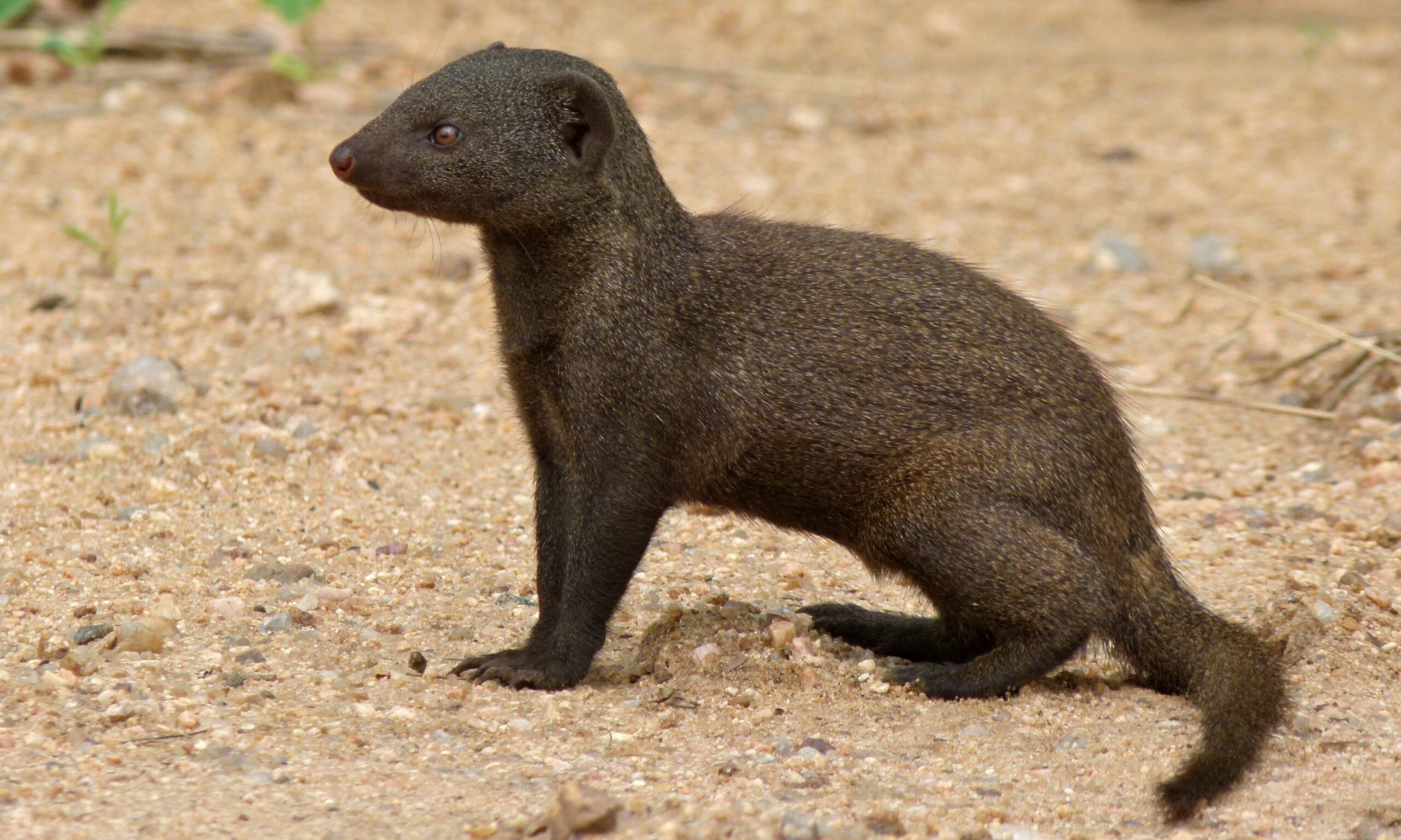
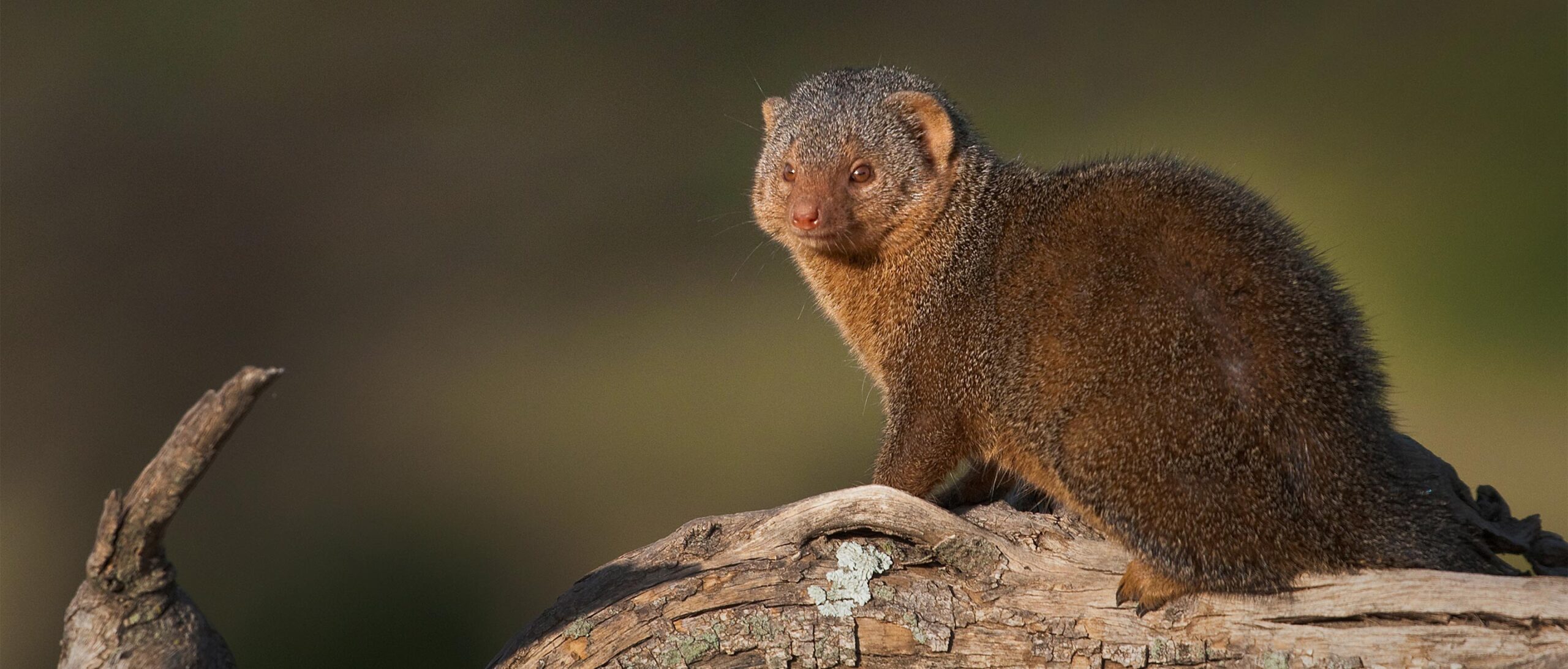
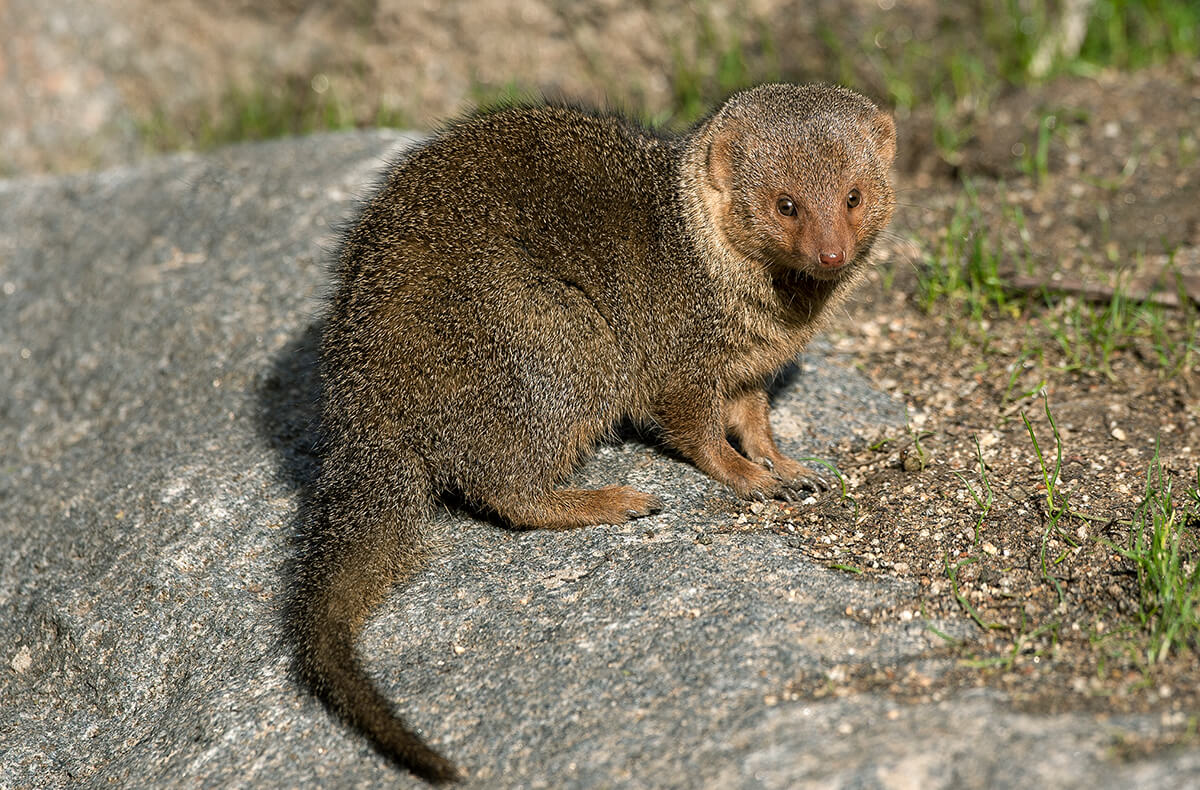
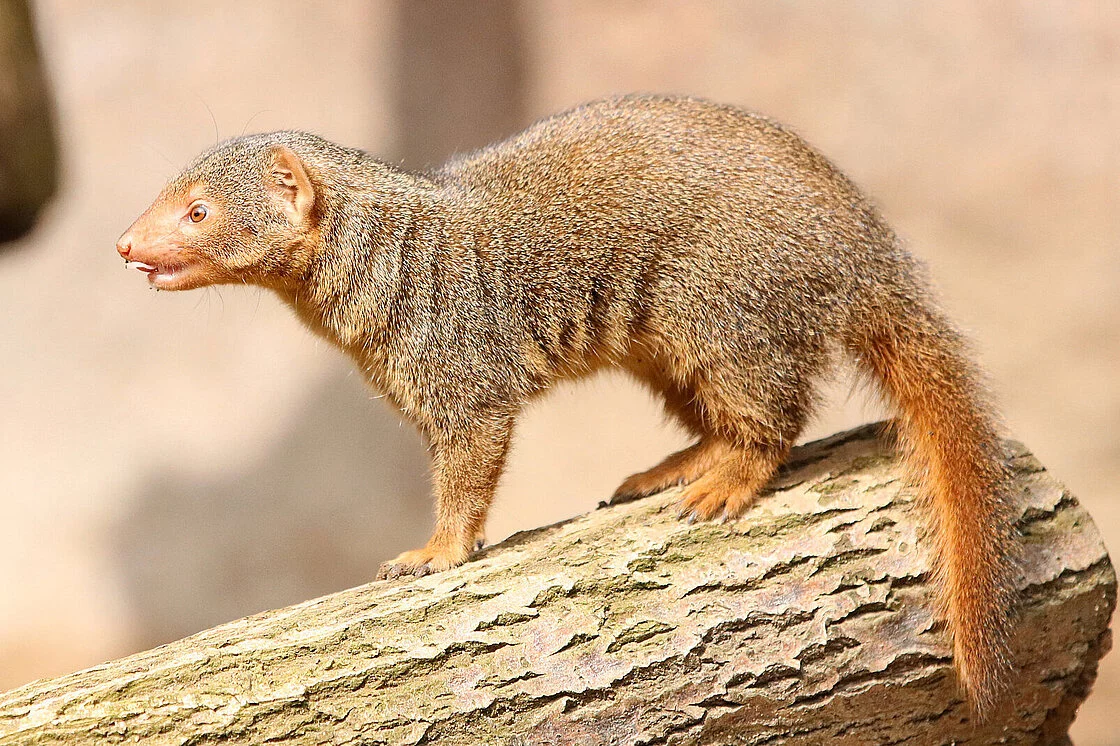

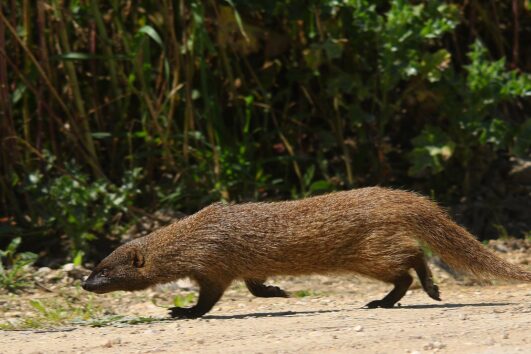
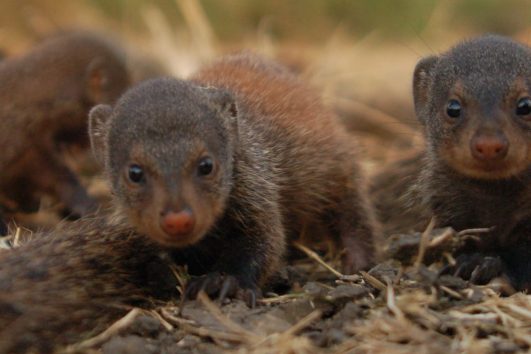
Tour Reviews
There are no reviews yet.
Leave a Review